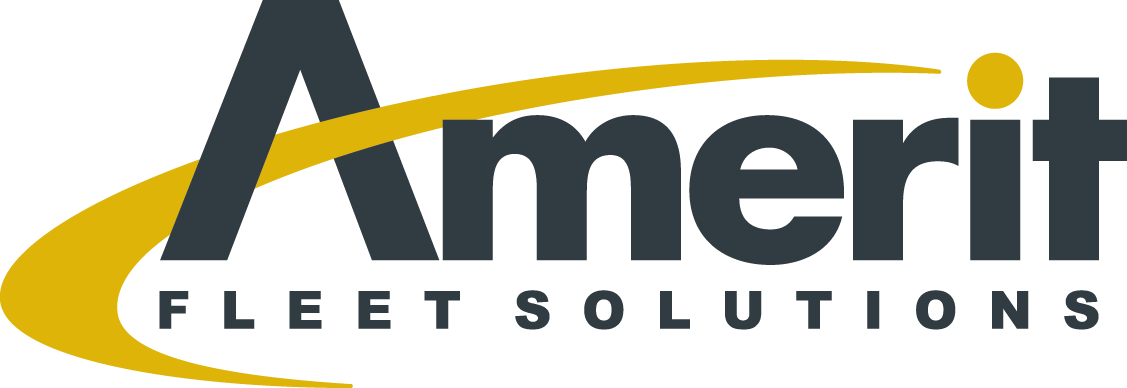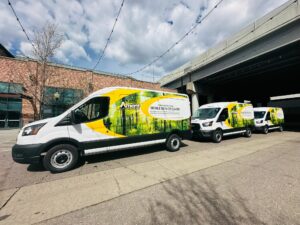Building a PM Program that Prepares You For Anything
What is preventive maintenance? And how can you build a PM program that prepares you for anything?
Almost all fleet professionals agree, regular preventive maintenance is key to the performance of your fleet and to keep downtime low. As universal as that sounds, there are common misconceptions when it comes to understanding what a PM really is, and why it includes far more than just an oil change.
When talking with prospective clients our team often hears the same question when it comes to preventive maintenance (PM): “My local repair shop only takes 30 minutes for an oil change, why does your PM take longer?” We’ve heard this misconception enough lately that we thought it warranted further conversation.
The common mistake made is the impression that a 30-minute routine oil and lube change is the same as a thorough PM. The second misconception is that an oil change is enough to keep a fleet running at peak performance. The driving force behind this way of thinking is a strong one: a 30-minute oil change seems to save money compared to a full PM program which can take twice the time.
However, at Amerit we firmly believe — and our data proves — that a full PM program is fundamental and critical to your fleet’s performance. A PM program actually saves you a great deal of money and delivers profitability when looked at from a broader perspective.
Let’s look at three areas of savings that the standard oil change cannot address:
Safety and Department of Transportation Inspections
Amerit’s PM program includes all components of a Department of Transportation (DOT) inspection to ensure safety and compliance with DOT standards.
Many times, DOT inspections occur randomly and unexpectedly. In the event a vehicle is not up to code, the penalty can be extremely costly. Beyond that, if a vehicle does not pass inspection, it may present a danger to the driver and those sharing the road.
By incorporating the elements of a DOT inspection into a PM service, Amerit ensures that the vehicle is safe for the road and will pass any unpredicted DOT inspections.
Tires
The value of tires is immeasurable for the safety and efficiency of your vehicle. Properly maintained tires not only last longer but they improve fuel efficiency and deliver savings as well.
For example, proper air pressure — or lack thereof — presents the greatest risk to a vehicle. If a tire is not inflated properly, it immediately diminishes fuel economy. Over the long term, tires that are under inflated are more susceptible to casing damage, a problem that has no other solution than to replace the damaged tires with new ones. If left unattended, worn and damaged casing presents a real safety concern.
Amerit’s PM program monitors and prevents casings from premature failure by rotating or replacing tires at the appropriate time and checking air pressure on each tire of every vehicle. A task that takes only 10 minutes during a routine PM prevents a repair that would take as long as two hours and at a much higher cost. Amerit also measures tire tread to make sure the tread depth is to legal DOT standards, as well as safe for the current weather conditions. If the tread is not up to code, the casing becomes susceptible and threatens putting the vehicle out of service by DOT criteria.
Engine Coolant
Engine coolant plays an extremely important role in the functioning of a vehicle’s engine. Used to prevent both freezing and overheating, it is made of unique chemicals that must be checked and replenished on a periodic basis.
In the event these chemicals are mishandled or not attended to, they can cause irreversible damage in a short period of time. Correcting and repairing the damage is time consuming and costly but can be easily mitigated with a proper, full PM service.
In a world of increasing pressures for performance and efficiency, a comprehensive PM program will:
- Drive Cost Savings
- Extend the life of vehicles
- Mitigate safety risks to the fleet, drivers and community
- Reduce unforeseen breakdowns and costly repairs by ensuring your fleet is in peak condition
We have never met an oil change that can say that.
Preparing for weather: How a good PM program makes you ready for anything.
With the onset of winter weather, a good PM program is your greatest ally in preparing for the extremes in weather and challenging road conditions.
One often overlooked effect of cold temperatures is tire pressure. When temperatures drop below freezing, the air inside tires contracts, causing tire pressure to decrease. When the tire pressure decreases too drastically, this can create dangerous driving conditions for your drivers and your vehicles. Low tire pressure can lead to difficulty steering, decreased gas mileage, and the possibility of a blowout, compromising both performance and safety. Regularly checking and maintaining proper tire pressure is essential to staying safe on the road this winter.
Also, it’s fundamental, but having a recent brake and tire tread inspection, and acting on that report, is critically important. When the weather turns nasty, safety is literally riding on the tires and brakes.
Here are several other winter-proofing tips that the Amerit Team recommends ensuring your fleet is ready to roll:
- Ensure fuel additive Diesel 911 is on hand to re-liquify gelled fuel and restore engine operation in cold weather conditions.
- Drain fuel water separators weekly to avoid freezing.
- Drain all air tanks on tractors and trailers during all PMs. Remind your drivers to do this daily.
- Have air brake alcohol on hand in case of winter freeze ups.
- Load test all batteries during PMs.
At Amerit, Safety is our top priority. Our Safety Team has these recommendations for the safety of your drivers, your vehicles and your community:
- Reduce speed when there is ice or snow, as speed limits are based on optimal road conditions.
- Maintain at least 3x the normal following distance when driving on snow and ice.
- Stay at least 200 feet behind a snowplow.
- Use extreme caution on bridges, ramps, and overpasses as they freeze first.
- Refresh your skills – revisit how to safely maneuver a vehicle if driving in icy conditions.
- Avoid travel during winter weather advisories.
- Plan your route ahead of time and allow plenty of time to navigate safely in winter weather conditions.
- Before you depart, make sure your cell phone is fully charged. In case of emergency, carry a portable car charger with you.
- Keep a travel first aid kit on hand in case of emergency. A travel first aid kit should include items like blankets, hand warmers, essential medications, water, batteries and flashlights, maps, ice scrapers, road flares, reflective triangles and a basic tool kit.
- Use a winter windshield washer formula to prevent freezing while using windshield wipers.
- Keep the gas tank full to avoid ice accumulation in the tank and fuel lines.
Reducing Downtime Through PMs and Data
One of the best ways to improve the uptime of your fleet and reduce costs is to implement a PM program. Here are a few tips to set up an efficient PM program for your fleet:
- Prioritize fleet maintenance service, don’t delay inspections or routine maintenance. Set a schedule and stick to it.
- Define the details. The details are the criteria you use to determine which vehicles need to be scheduled for inspections, preventative maintenance, and warranty repair/break-fix repairs. These details can include tasks from the list above including mileage, usage, age, and warranty.
- Determine your fleet’s pain points – does your fleet struggle with warranty support, DOT inspections, routine maintenance, or all of the above? Which of these areas is impacting your bottom line the most?
- Determine when technicians can complete recommended repairs, and complete repairs when there is a first sign of a problem rather than before the next DOT inspection.
- This helps reduce unexpected breakdowns between inspections and reduce maintenance costs over the life of the vehicle rather than cutting costs in the short-term.
- Utilize both mileage and time-based PM intervals. Many urban fleet vehicles experience frequent starts and stops, and lengthy idle periods, but don’t travel many miles. It’s a good practice to have both time and mileage-based PMs to ensure your vehicles have regular fluid replacements and safety inspections.
Optimizing Scheduling Technology: How Custom Maintenance Portals Can Improve Your Operational Efficiency
Each fleet utilizes their own variation of telematics, maintenance software, and a combination of other software to understand and analyze efficiency. In order to prioritize your fleet maintenance service, a maintenance portal is key.
Amerit uses a HUB, a proprietary, custom-built portal to communicate maintenance needs, order parts, and schedule services with our customers. While our technology is proprietary, developed and managed entirely in-house, we have seen the positive impact it has had on the following:
- Reducing confusion and back-and-forth communication between fleet operators, drivers, and the mechanics working on the vehicles
- Reducing waiting times for services and routine maintenance.
- The HUB allows operators to schedule maintenance during routine downtime rather than altering their routes or asking drivers and vehicles to take different shifts entirely for assets to be serviced.
- Improving uptime by getting vehicles on the road faster
- Improving operational efficiency by combining one platform for billing, parts purchasing, report data and maintenance requests
In conclusion:
There are many factors to consider when looking to improve the uptime of your fleet, reduce costs, and increase operational efficiency. We believe a multi-faceted approach to prioritize fleet maintenance service and weather preparedness, driven by actionable data, can create meaningful impact and add significant improvement to your business’ bottom line.
Let’s Talk! Fill out our form to connect with one of our team members today.
Not ready to connect? Follow us on LinkedIn or Facebook to stay in touch.




